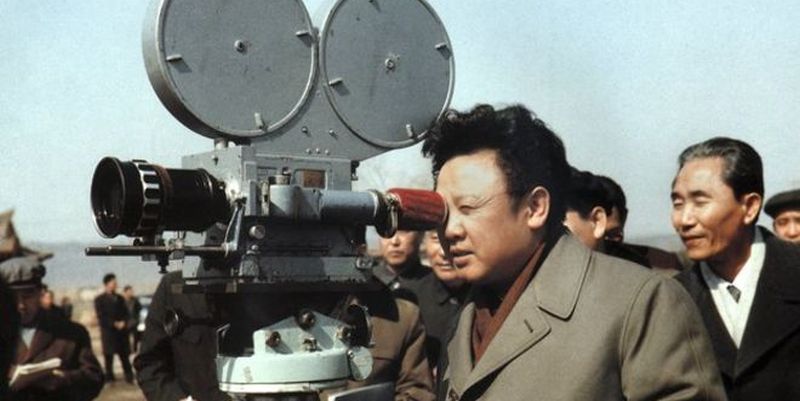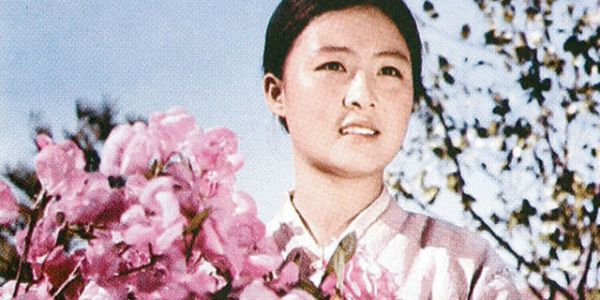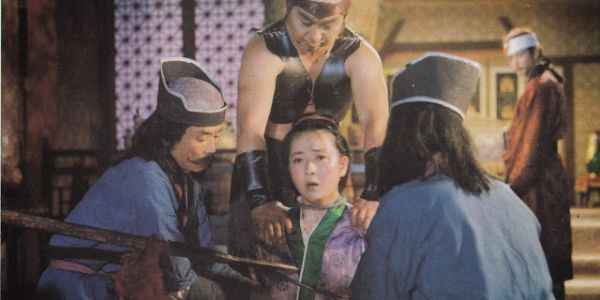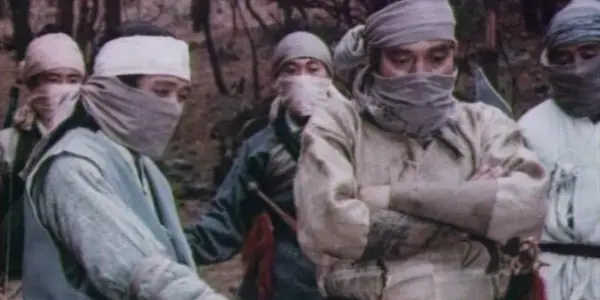The Secret History of North Korean Martial Arts Cinema

All articles contributed by people outside of our team are…
The words “North Korean cinema” have traditionally invoked images of staid, humourless propaganda movies each more concerned with exalting the virtues of the nation’s glorious leaders than sculpting cohesive narratives. For those who have looked into the films emanating from the secretive Asian country it is possible to conclude that, in some instances, this description is rather unnervingly accurate. Many of these stereotypes exist for a reason.
Yet, largely unknown to the outside world, the Democratic People’s Republic of Korea (to give the nation its preferred name) is also responsible for creating some truly exciting, innovative and emotionally vivid features.
The Most Obscure Cinephile
With former leader Kim Jong-Il a renowned cinephile, one rumoured to have collated the world’s largest private film collection, it is little surprise that the state has long acknowledged the importance of the moving image and has allocated vast resources into cultivating its movie industry. Whilst many of the features created in the immediate decades following the Korean War do indeed focus on themes related to crushing imperial enemies America and Japan, Kim realised that such a shallow focus of ideas would not travel to foreign markets particularly well.

These movies, most famously including My Home Village and The Flower Girl, more than adequately served the purpose of sharing Kim’s juche ideology within North Korea, yet were highly unlikely to find an audience abroad who, it was hoped, would be dazzled by the DPRK’s mastery of the arts. The ultimate goal for the nation’s movie industry was to be taken seriously by film experts, to inspire envy and, in the process, win lots of festival awards on the international stage.
This led to a rather peculiar position for Kim: up until the late 1970s, filmmakers working within North Korea were taught to operate under strict guidelines imposed by the hereditary leader. His book, “On The Art of Cinema“, was written as a practical and theoretical framework for directors and no-one was allowed to stray from the Kim-imposed orthodoxy. This, of course, meant North Korean films largely became rote and one-note.
The Kidnapping of a South Korean Director
A radical decision was made to abandon the previous rules and restrictions and to massively liberalise the film industry. That the man brought in to spearhead this new movement was Shin Sang-Ok, a South Korean director kidnapped solely to fulfil this purpose, makes the flourishing of the North Korean movie scene of the 1980s rather remarkable. Even more noteworthy and unexpected is that, under Shin’s tutelage, the genre that really thrived throughout the decade were explosive martial art and action films that would rival anything made in Hong Kong during the same period.
As Shin began creating his own movies and over-seeing numerous other productions, the North Korean film industry became a hot-bed of creativity. With the shackles now off, the DPRK begun to tackle subjects in its films previously considered unimaginable. Shin, for example, directed Sarang Sarang Nae Sarang (“Love, Love, My Love”), the first film in North Korean history to have the word “love” in its title. Personal romantic yearning had previously been outlawed on the big screen and seen as a distraction from fulfilling one’s role in Kim’s society. To use the word three times in the name of the feature was shocking and bold, a real statement of intent to leave behind old values.

The liberalised nature of North Korean cinema was found in its movies plots too; whilst most cinematic tales had, previously, focused solely on suffering and self-sacrifice for the greater good, on innate hierarchies and filial piety, many of the new films were created solely for entertainment purposes. Action sequences replaced ideological monologues and, under this context, the Golden Age of North Korean cinema blossomed.
State-Sanctioned Practical Effects
For anyone who has ever witnessed the impeccably choreographed performances featured in the Arirang Mass Games ceremonies, it is not hard to imagine what great lengths North Korea will go to when wanting to create unrivalled visual spectacles. This was very true of the action sequences found in the nation’s cinematic output. Shin, for example, wanted to feature an exploding train in one of his movies called Runaway. Rather than rely on special effects, Kim signed off on blowing up a real train to make certain the finished product was as spectacular as possible. It is hard to imagine any other state in the world sanctioning such government-funded expenditure for one shot of a movie.
Most impressively of all, however, were the martial arts stunts found in films such as the 1986 movies Order No. 027 and, especially, Hong Kil-Dong. These movies feature a multitude of young men who have been trained from an incredibly early age to excel in their physicality – this is put to impressive display with a number of set-pieces in the film which no Hollywood movie studio would ever give the green light for.

Take, for example, the very first sequence found in Jung Ki-Mo and Kim Eung-Suk’s Order No. 027. We witness an elite military troupe preparing themselves for battle with vertiginous leaping kicks and target practice before we see an insanely dangerous stunt in which three soldiers perform choreographed somersaults over the top of a moving car. This level of athleticism is mind blowing to witness. A central fight sequence mid-way through the movie replicates the intensity of the film’s opening over an elongated piece of action which recalls some of the finesse of the glory days of early Hollywood – it is as if Buster Keaton and Jackie Chan teamed up to create a deliriously exciting piece of slapstick.
Yet, whilst the DPRK returned to the genre in the following decades (with the Japanese co-production Somi, The Taekwon-do Woman and 2006’s Pyongyang Nalpharam as notable examples), the nation’s cinematic golden age and action film movement both peaked with the folk-tale inspired Hong Kil-Dong. Directed by Kim Kil-In (the filmmaker behind Centre Forward, Miles Along the Railway and They Met On The Taedong River and perhaps the closest thing North Korea have to a real auteur), the movie was one of the many projects Shin Sang-Ok helped bring to fruition before ultimately fleeing the country and represents the key movie in his legacy of modernising North Korean moving pictures.
Technically Innovative and Tinged with Korean Character
Hong Kil-Dong, voted by North Koreans living outside the country as the nation’s greatest film of all time, is an incredible feature to watch for a number of reasons. For those who imagine the cinema of North Korea as sober and dull, Kim’s movie acts as an antithetical antidote – from the opening sequence onwards, it is impossible not to become beguiled and charmed by this playful and aesthetically spectacular feature.
Based on the traditional Korean tale of the same name, Hong Kil-Dong is an Eastern version of the Robin Hood myth and one which has been adapted for the big-screen many times on both sides of the North/South divide. Kim’s version, however, is the only one to date to feature wire-work and martial artistry of this scale. To create the lavish visuals required for the major production, Shin and Kim collaborated with experts employed from Hong Kong, bringing their technical expertise into a project which also boasted the keen eye for detail and flair provided by two of the truly great Korean filmmakers of all time. This was exactly the type of project Kim Jong-Il had aspired to make when he went about liberalising the industry – technically innovative and tinged with Korean character – but came as the modernisation projected had already reached its apex and begun its slow decline.
Shin’s escape from the country, accessed by seeking sanctuary in an American embassy whilst promoting North Korean film at a European festival, seemed to deflate the Dear Leader’s enthusiasm for making the cinema of the DPRK the envy of the world. Whilst the country would never return to the static blueprint form of mechanical reproduction found in much of the nation’s early years of cinema, there would never again be a period as artistically rich or exciting as that found in the period Shin headed up the industry.
Hong Kil-Dong is an incredible film for a variety of reasons, not least of all for its status as the most impressive result from North Korea’s failed experiment at reaching out to the outside world. That the film was created by a director kidnapped from the South under orders for a hereditary heir of a secretive, totalitarian country is almost as impressive a story as the one found in Hong Kil-Dong itself.
Guest Author
Kieron Casey

Kieron Casey is a part-time PhD student researching the shared culture of North and South Korean cinema. He’s seen more communist propaganda than you ever will and regrets nothing. Find Kieron on Twitter and his website, The Totality.
Does content like this matter to you?
Become a Member and support film journalism. Unlock access to all of Film Inquiry`s great articles. Join a community of like-minded readers who are passionate about cinema - get access to our private members Network, give back to independent filmmakers, and more.
All articles contributed by people outside of our team are published through our editorial staff account.













